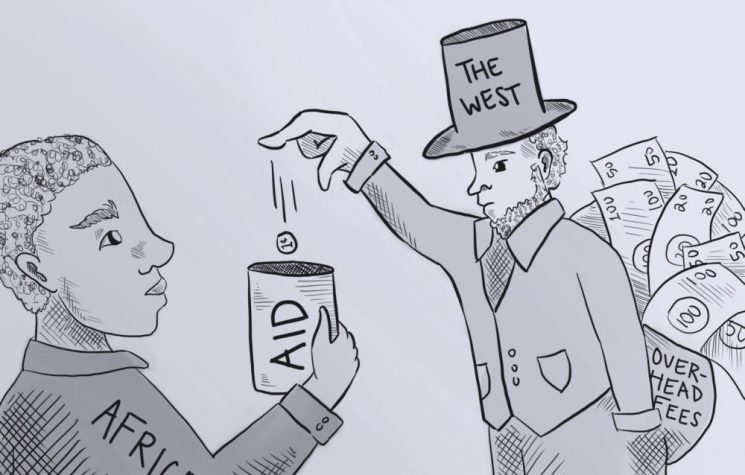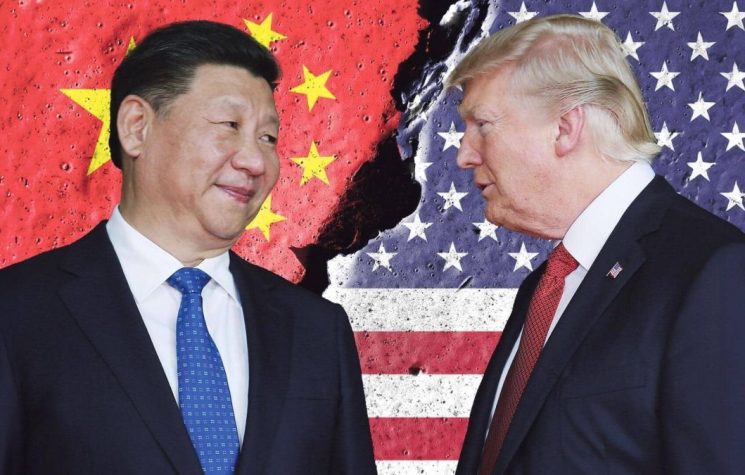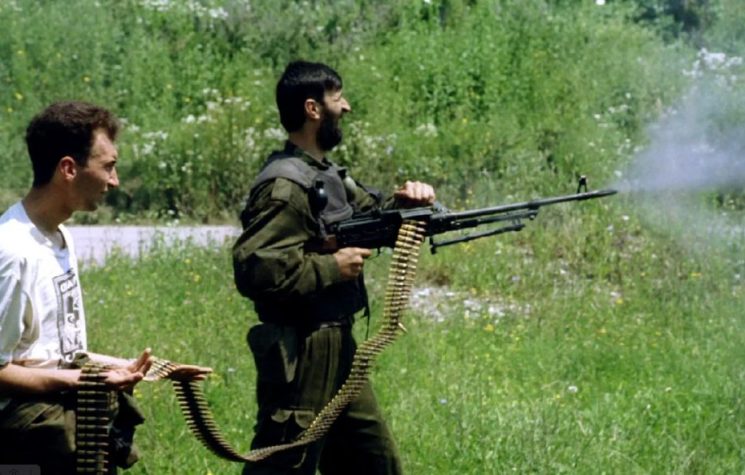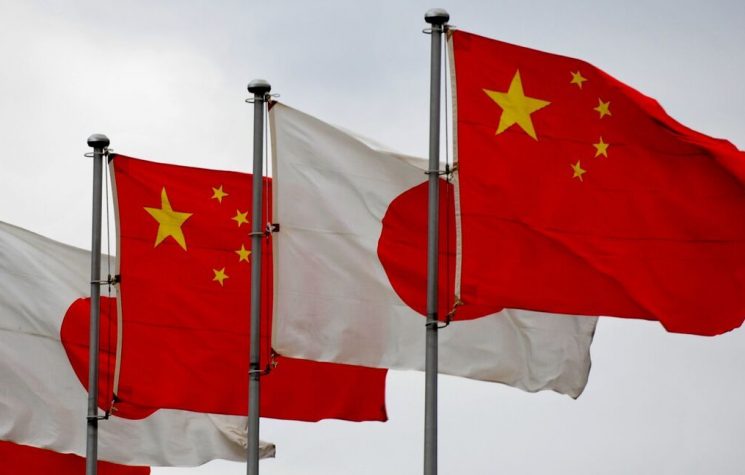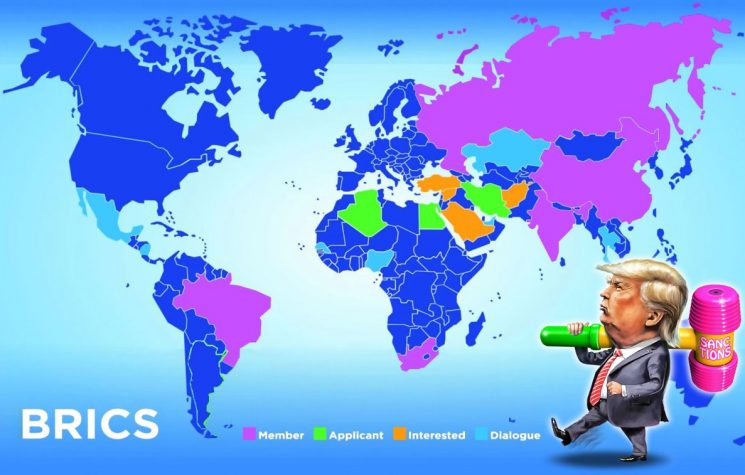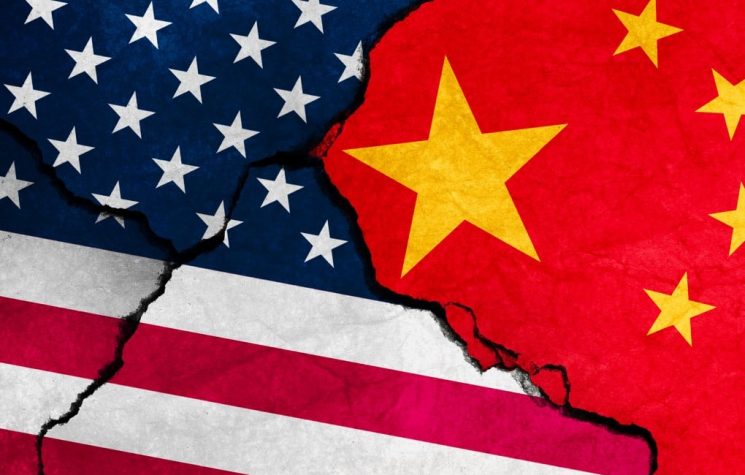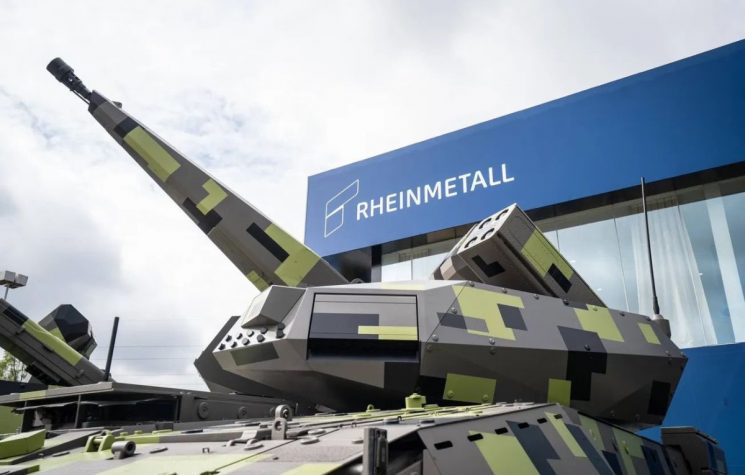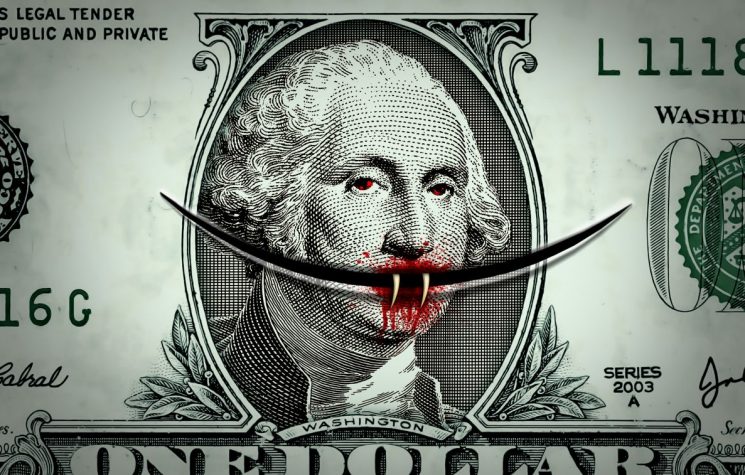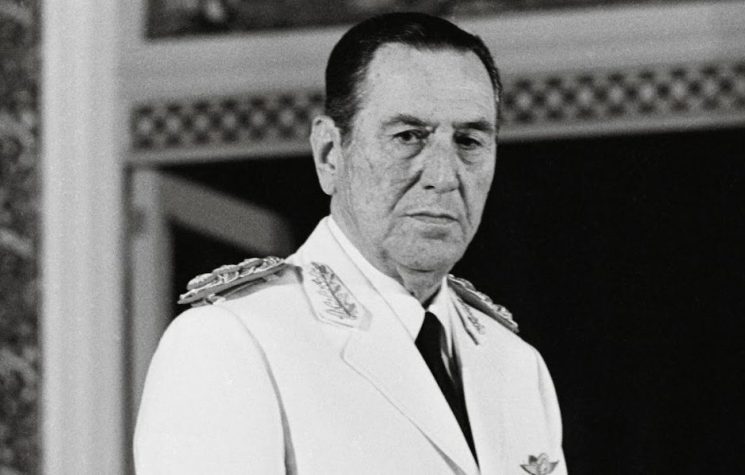If you are still waiting for someone to officially proclaim the start of World War III (WWIII), well, you are wrong. We are already in.
Contact us: info@strategic-culture.su
If you are still waiting for someone to officially proclaim the start of World War III (WWIII), well, you are wrong. We are already in. And there’s someone who is starting to talk about WWIV.
History, strategy, psychology
Western political and security leaders, to a much greater extent than their “eastern” counterparts such as Russia and the People’s Republic of China, have failed to realize that the main force on the strategic battlefield in the early 21st century is the psychological domain, even though they have long explored the cognitive dimension and invested long years of research. Levels of defense expenditure are only a small component of strategic success or failure. All success or failure is generated by the mind, and at no time in recent history has this been more evident than today, when formal conflict, during and after the Cold War, has become a minor factor in the shifting global balance of power.
What goes on in the minds – and particularly in the “collective mind” – of populations is the critical factor that determines the success or decline of the strategy. This factor, the morale (as it is usually called), has always been manipulable, but today it’s especially so thanks to mass communications, that have made traditional forms of communication less effective. The ability to create mass psychosis, including mass hysteria, is now almost instantaneous due to the capacity for electronic peer-to-peer communication. All it takes is a little cognitive bias and immediately everything can change.
The masses still have power, but they are not aware of it. It used to be taught in school that “knowledge is power”, not any more. But the key still remains the same: awareness.
Even on the military battlefield, when the desperate struggle for survival and domination is literally existential, the psychological element can determine victory or defeat. Strategists and commanders in the past were taught to keep their troops’ spirits up, aware that it was not a question of quantity, but of quality and determination. A soldier who’s not convinced and ready to face battle, will never make it back alive from the conflict; on the contrary, a single soldier who is well centered and prepared can rout a large number of opponents.
This “morale” dimension also applies on a social level: a society kept poor, unhappy, full of problems, will be an easy target for manipulations, psy-ops, hybrid conflicts of various kinds. It all comes down to arranging the optimum conditions for interacting with the adversary – or the guinea pigs – in the best possible way. Minimum effort, maximum result.
The preparation of the hardware is crucial, but the software that manages it is even more important. Indeed, the mentalities required for formal military action are hierarchies that, in many ways, are antithetical to the conduct of strategic psychological operations. Even the combination of conventional military structures, special forces, and intelligence-based direct action capabilities – more far-reaching than at any other time in history – are insufficient for this task. Today, we are faced with the objective need for new profiles: the head of state must be the chief intelligence officer, but also the nation’s grand strategist, hence also the architect of the dominant strategy concept. Leadership takes on a new role, one that is no longer strictly political. A figure more reminiscent of the dictator of ancient Rome is back in vogue: he was an army man, often a general, with great political charisma who led the senate in a delicate phase of emergency and transition to a new political asset. We can see, for example, that King Charles III of the UK has emerged as the only British leader who has understood how to use the psycho-political aspects of prestige to promote Britain’s long-term agenda to a far greater extent, than the three prime ministers who have served him since his accession to the throne.
It’s not enough to have a “strongman” in government, he must also be prepared to keep an eye on all aspects of the country’s political, economic and strategic life. To do this, it takes preparation that is not improvised, which is why political elites are prepared thoroughly much more than in the past century.
The transition to World War III
One of the most fascinating features of the contemporary world is the complexity of the systems in which we live, the understanding of which is gradually expanding as we become aware that in order to minimize and synthesize one must first consider the broad horizon within which things happen. This applies to war too.
In fact, it happens that the rapid and powerful technological development in the military sphere, where research has an advantage of between 10 and 25 years over civilian research, has led to a gradual mutation in the way of waging war, creating an imbalance in the topography of war and forcing the codification of new categories within which to place not only the new types of weaponry, but also the way of employing them and the strategies and tactics that derive from them. It’s therefore necessary to frame these new geometries and enter into the ideological first and pragmatic later dimensions of what wars are today.
Global warfare, the concept of which has developed over almost three centuries, is a type of war that encompasses all its predecessors and declines them simultaneously and multilaterally, without ever retreating. It is no longer conceivable to wage war only “one way”, today it’s played out on several chessboards at the same time there is a pressing rhythm that is no longer that of drums and marches but that of the speed of light flowing between the circuits of the digital world. It’s a question of domains of war.
The domains of war are the dimensions within which war takes place. Today we identify five of them: land, water, air, extraterrestrial space, infosphere. If for the first four it’s not difficult to make associations with historical events and military structures, the fifth is the one that interests us most and within which it’s appropriate to make an important distinction between wars today defined as conventional and special wars. A special war is fought on a special battlefield, with special armaments and special actors. Contemporary hybrid warfare, one senses, is that which lies between a conventional and a special war; it has the characteristics of both but moves easily between the two levels, as well as between the five domains. It is, in this sense, a total war (modes) in a global context (scenarios).
A hybrid that is also asymmetrical, i.e. it does not follow those measures we have long been accustomed to, and it also requires a commitment on the part of the populations, who are generically part of the war, even if unconsciously. Psy ops, social engineering, military geo-engineering, video games, predictive cinematography, cyberwar, infowar, ecowar, the internet that began as an American military platform and today connects the world, and much more: everything must seem normal, must be consumable like a well-sold product. It is a question of marketing, business is business. The constellation of new categories fits into the context of the inter-operability of domains and arenas.
The grey zone stands as a “zone” with blurred boundaries between the public and private worlds, a semi-occult dimension in which the hidden level of permanent warfare continues: that operated by intelligence.
Today’s strategies and social situations are more complex – and apparently less controllable – than those of the 20th century. The transformation of warfare, which began with the end of the Second World War, meant that global conflict was undertaken as indirectly as possible, to avoid possible escalation to nuclear war. This did not alter the pace of strategic competition, but forced it into a broader spectrum of activity, redefining “total war”, which essentially means that the Cold War was the “Third World War”, with conflict increasingly staged through economics, law and many other facets, mainly based on influence and domination.
Let us admit the possibility that we may not have realized that in truth we have never emerged from a situation of global conflict. Albeit low intensity, albeit unconventional, war has never ended. Historians declared the end of WWII in 1945 on the basis of a few striking events, but did not bother to define whether it was really over.
Becoming aware of WWIV
Arguably, we are now in World War IV, where what counts more than anything else is the new domain of influence: prestige.
Prestige is what gives a large portion of influence and the ability to persuade. It must be maintained in multiple ways, from the physical image and (effectively demonstrated) prowess of its armed forces, to the strength of its currency, the insurmountable appeal of its ideals and forms of government, the projection of national trust, and the dominance of language and literature. These values are all in the minds and behaviour of those who hold them and are perceived by outside observers.
Prestige is fragile and can evaporate almost instantly with the projection of insufficient competence, vacillation (indecision), dishonor or the revelation that the omnipotence or universality of its reach is compromised. The temptation to use strategic weapons against tactical targets, for instance, simply shows how these weapons are not considered “definitive”. The U.S. use in Iraq and Afghanistan, for example, of the B-1 and B-2 strategic bombers, built to deliver strategic nuclear payloads in the event of a major conflict, has forever removed the awe and prestige they once had. “Is that all?” was the response of those who were not killed in B-1 or B-2 air strikes against tactical targets. It’s the potential of strategic weapons that is coercive, not their actual use.
Therein lies the irony. The prestige of almost all “great powers” in 2024 is lower than at any time since the end of World War II, with the exception of the People’s Republic of China, which gained prestige after about 1972. We could argue that the strategy of psychological warfare in the prestige spectrum has transformed from a strategy of building influence to a strategy of eroding the influence, will and cohesion of adversaries. The offensive use of psycho-political warfare or conceptual domination operations has gained importance in the current global battlefield.
Thus, it’s the countermeasure to attacks on national moral, cohesion and prestige that is critical. What remains, as always, is the defense and reinforcement of unifying ideals and the spurning of confidence: the projection of the apparent ability to tackle “the impossible”, and to succeed, with apparent ease. What we have witnessed, especially in the last decade, is an unconscious shift to only offensive warfare against the cohesion and prestige of adversaries, rather than the defensive bastions of one’s own psychological strength. Fewer weapons in the field, more soft power attacks.
The current lack of attention to strategic psychological defences is exacerbated by the bitter divisions within societies that remain unaddressed by their governments due to preoccupation with internal competitions for power, regardless of the impact on the prestige of the state, its leaders or national unity. The offensive and defensive aspects of psychological warfare on a national scale do not fall within the normal framework of military operations and are essentially outside the “visible” spectrum of kinetic and electronic operations, even though the need for military morale is well understood in the military environment.
Georges Clemenceau famously said that “war is too important to be left to the military” and, indeed, this reinforces the primacy of strategy over kinetic operations. How do modern leaders, particularly in this era of the “new total war” doctrine and “total civil war”, equip themselves with a training and support staff that encompasses the psycho-political realm? This requires not only a deep sociological understanding of the target societies (including one’s own), but also a deep and contextual understanding of history and current infrastructural dependencies, and much more (and this includes supply chain dependencies, historically emotive inter-state ties, especially linguistic and trust, etc.). This does not mean, however, that there is no link between direct (military or paramilitary) and indirect physical actions.
Reality should not be confused: the “Fourth World War” is well underway, and – just as the First World War was decided on the “playgrounds of Eton”, it’s being decided in urban and rural landscapes where the masses of “globalists” and “nationalists” are lined up and influenced, strengthened or defeated, by the nuances of concepts and images, professionally deployed on the playgrounds of Harvard and other star-studded universities, where the cognitive dimension of conflicts is very clear, but struggles to enter the halls with the buttons.
Such awareness is much more present in the East, outside the rot of the decaying West. Russia, for example, but also China and Iran, have for decades been more prepared for the psychological dimension of conflicts because they are constantly under attack from the West. This has meant that strategic – and also political, economic and social – adaptation has been more agile and faster. The consequence is that the political leadership of these countries is several years ahead in understanding how to exploit those strengths and weaknesses and how to act on the collective hardware. It is undeniable that while political factions in the West are fighting each other in a process of inexorable decline and failure, the countries of the East are experiencing a phase of rise and propulsion.
All this would have been impossible without the projective capacity of the old ruling classes, who were able to look to the future with foresight, investing in selection, elitist education, preparation for different scenarios, research and promotion of technologies and tools to acquire global leadership. Sun Tzu taught “Know your enemy as you know yourself, if you do so, even in the midst of a hundred battles, you will not be in danger”. Getting inside the opponent’s mind is the first step to governing it.













